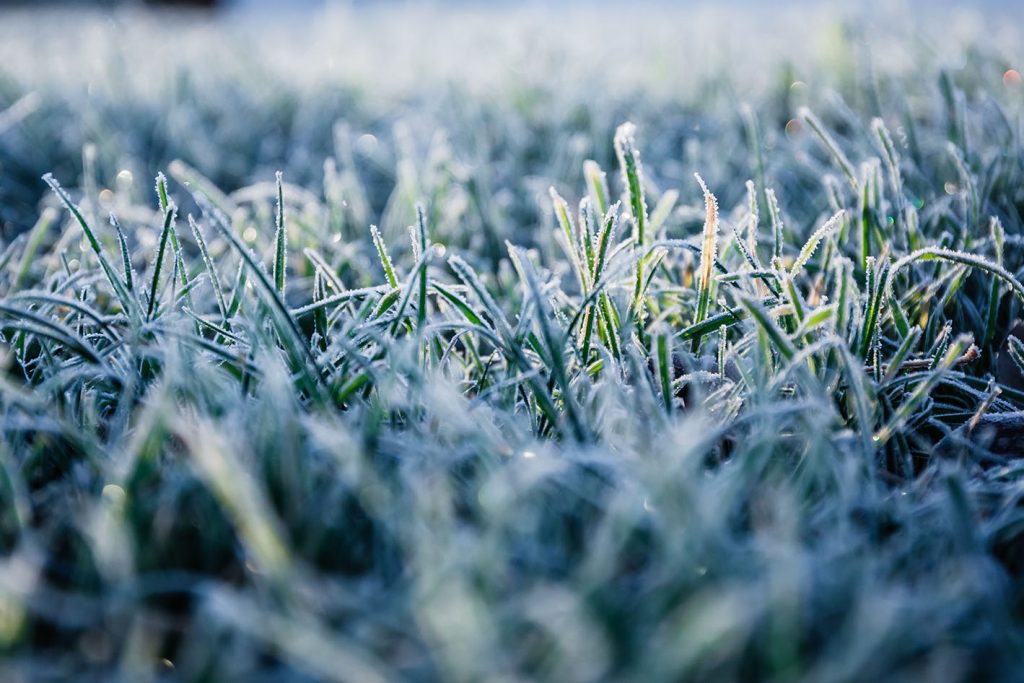
A healthy lawn should be able to go dormant in the winter and then green up again in the spring. You will likely have to do some work to get your lawn back into its best condition after a long winter. But sometimes you may notice patches that aren’t greening up when the rest of your lawn does. What you’re seeing is winter kill, spots where the grass died over winter. There are numerous causes of winter kill, but luckily there are also ways to avoid it. Even though we are in the dead of winter right now, don’t ignore your garden. It doesn’t need to be watered and mowed as it does in the growing season. But there are still steps you can take now to avoid patchy turf in the spring.
![Why Your Grass Died Over Winter [infographic]](https://theturfgrassgroup.com//wp-content/uploads/2020/01/Why-Your-Grass-Died-Over-Winter-infographic.jpg)
When to Care for Your Turf to Avoid Winter Kill
If you want to avoid winter kill, the best time to prepare your lawn is late fall. You want to prepare your lawn before winter hits and the turf goes dormant. That way, you won’t be left wondering why your grass died over winter.
In the fall, as the weather becomes cool, fertilize your lawn. If you are using TifTuf™ Bermudagrass, you should fertilize with about 1-2 pounds fo fertilizer, split between two applications. Apply your fertilizer once in the spring and once in the fall. When fertilizing, make sure to read and follow the direction on the fertilizer. More is not more with fertilizer, and over-fertilizing could damage your turf.
Another important pre-winter lawn care task is aerating your lawn. Turfgrass needs access to air, water, and nutrients, and aerating your lawn helps it receive those things. A typical aerator will remove a small core of soil, opening up your turf’s roots to these vital nutrients. Aerating in the fall allows your turf’s roots to become as strong as possible before the winter dormancy. If you use an aerating tool, be sure to leave the soil from the cores on your lawn. As they decompose, they will help fertilize the grass. Also, it’s best to wait until your lawn is moist—but not wet—to aerate. A day or so after watering or rain is an ideal time to aerate.
Removing thatch and debris will help avoid buildup on your lawn that can lead to rot and other problems. Be sure to dethatch and clear your lawn before winter hits.
Snow Mold
Snow mold shows up in the spring as a fuzzy or crust patches on your grass as it begins to green up in the spring. The patches may be gray or pink. What you are seeing is mold that is attacking your turf.
Snow mold is the result of your grass staying too moist over the winter. When snow falls on warm ground, the layer under the snow can melt, creating the perfect condition for mold growth. Luckily, those scary patches of mold usually die out on their own as the warm sun beats down on your lawn in the spring. But if the mold has been taking hold over a long period—weeks or months—you may have some irreparable damage. There will inevitably be spots where the grass died over winter.
Once snow mold has killed off an area of your lawn, your best bet is just to wait. The warm sun will likely kill the mold, and your grass will then green up as usual. The surrounding grass can grow to fill in any spots. If the damage is severe and widespread, reseeding or resodding is your best option. TifTuf™ Bermudagrass is ideal for resodding. TifTuf™ is vibrant and robust well into the late fall and greens up beautifully in the spring.
Cold Desiccation
Desiccation is a fancy word for drying out. Grass that is too dry may experience cell death or even death of the entire crown. As long as an insulating blanket of snow covers it, grass can survive almost any winter weather. But without a protective cover of snow, exposed grass can become over-dried, or desiccated. During the winter, the cold air tends to be very dry. When low-humidity conditions are combined with a little wind, the crowns of the grass can lose lots of moisture to respiration. The turf’s roots stuck in frozen ground are unable to supply more moisture. As the crowns become dehydrated, they may experience cell death or a total die-off of the crown.
If a large area of grass died over winter, you might need to reseed or resod. If the grass you have now is not surviving winter, try TifTuf™ Bermudagrass. It is a scientifically developed turfgrass variety that is designed to green up better than any competitor.
Crown Freeze
The opposite problem of cold desiccation causes crown freeze, but the effect is the same. When the weather is relatively warm and moist, the crown of your turfgrass absorbs water. If a sudden freeze follows that more temperate weather, all that water can expand, destroying the cells of the turfgrass crowns.
Because crown freeze is a result of weather, it often affects large areas of a lawn. If a large area or patches of your grass died over winter due to crown kill, your options are limited. If the patches are relatively small, they may fill in on their own. But large patches need to be reseeded or resodded. If you’re worried about cold-weather hardiness in a mostly warm climate, like the Southeast, TifTuf™ is particularly suited to this environment. It was even developed at the University of Georgia.
If Too Much Grass Died Over Winter
Springtime is supposed to bring a significant greenup to your turfgrass. If the grass isn’t greening up the way you had hoped, you may need to remove the dead patched place new sod. The Turf Group connects businesses and homeowners to some of the best sod growers in the country. These certified growers provide turfgrass varieties perfected by scientists at respected universities and licensed exclusively to The Turf Group. Try our TifTuf™ Bermudagrass on your lawn in the Southeast. You will be amazed at the improvement.
TifTuf™ Bermudagrass was developed in the Southeast and is especially suited to this warm region. It is more drought-resistant than its competitors and requires less water in non-drought periods. It also needs less maintenance, with just a biannual fertilizer treatment and regular mowing. TifTuf™ looks great at any length from a half-inch up to two inches in height. Studies have also shown it to maintain its quality into late fall, with better greenup rates in the spring. Click here to find a grower near you!
